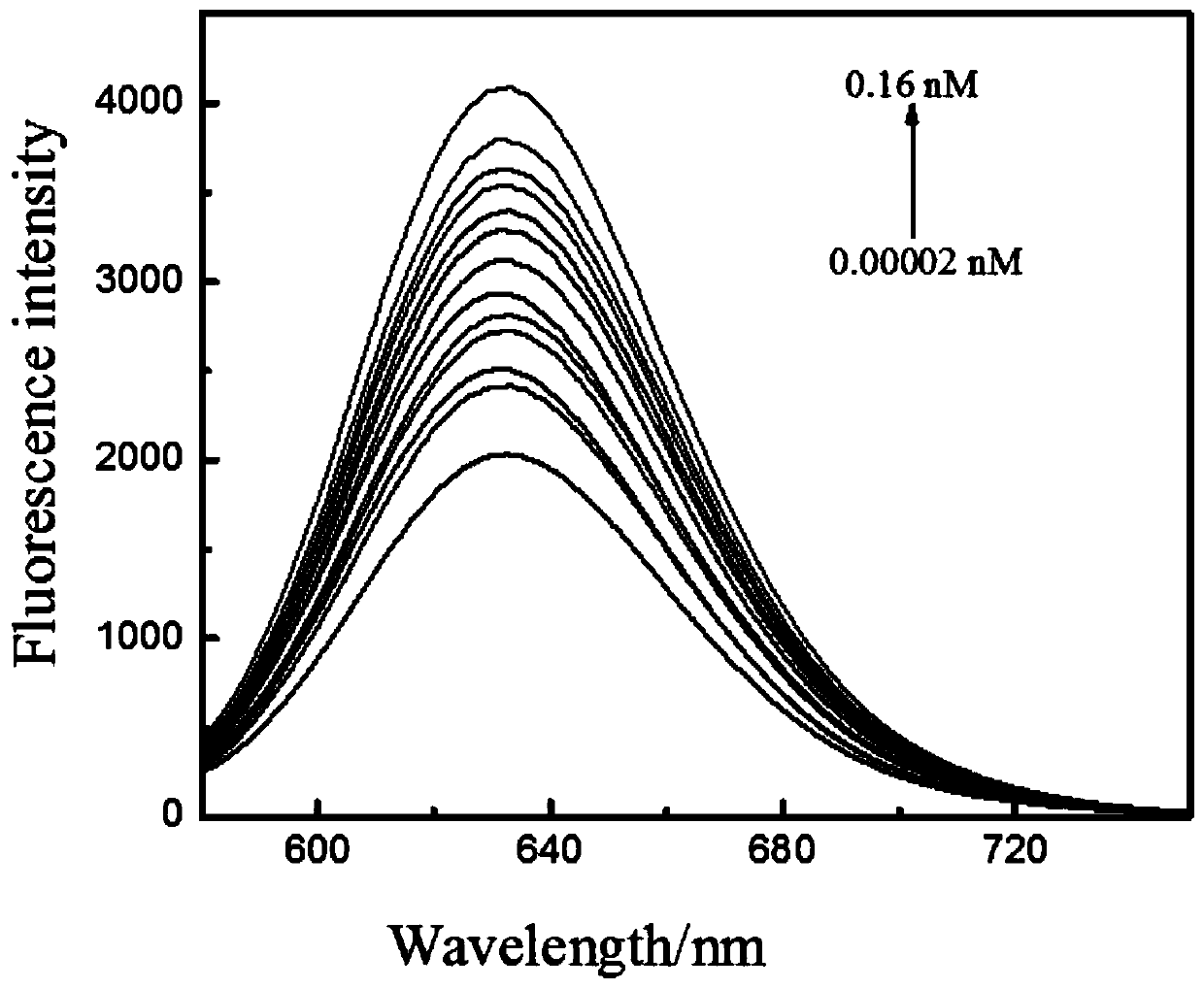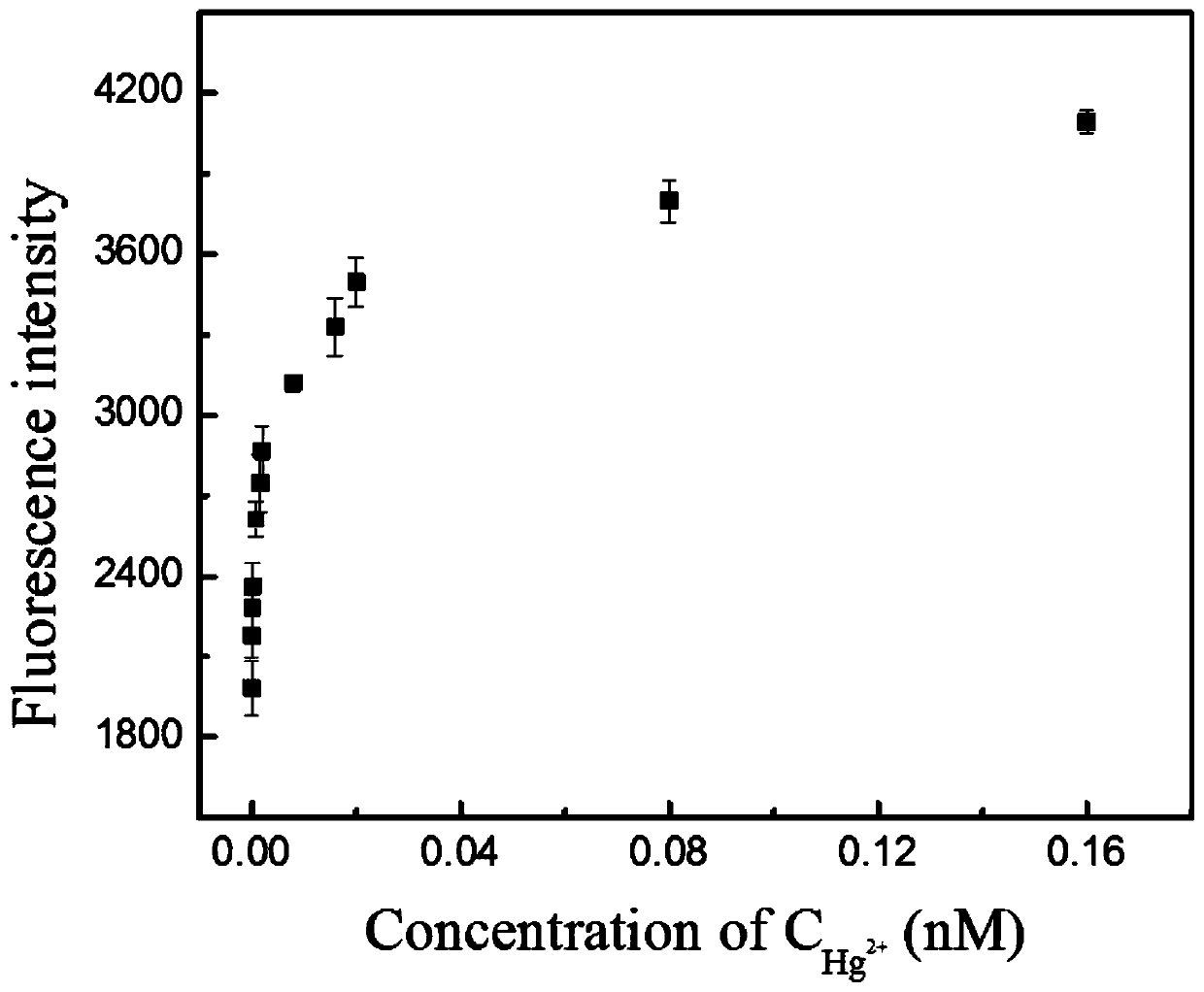A method for the ultrasensitive detection of mercury ions based on the t-hg(ii)-t structure-based agncs probe
A technology for sensitive detection of mercury ions, applied in the field of biosensing, can solve the problems of low detection accuracy, narrow detection linearity, and high detection limit of mercury ions, and achieve the effect of wide detection concentration range, low detection limit, and high accuracy
- Summary
- Abstract
- Description
- Claims
- Application Information
AI Technical Summary
Problems solved by technology
Method used
Image
Examples
Embodiment 1
[0035] The DNA1 sequence number used is: 5'-TTTTTTCCCCCTAATTCCCAAAGCTCGACGGATT-3';
[0036] The DNA2 sequence number used is: 5'-AATCCGTCGAGCAGGGGAAG GGGAAGGGTTTTTT-3';
[0037] The preparation method of DNA1-AgNCs, the steps are as follows:
[0038] Take 33 μL of DNA1 (100 μM), and dissolve DNA1 with pH=7.4, 10 mM phosphate buffer (the DNA1 solution that has been centrifuged before use is stored in a refrigerator at 4°C). Next, mix 160 μL of phosphate buffer (20 mM, pH=7.0) with the above 33 μL DNA1, and add 13.2 μL of AgNO to the mixed solution. 3 Aqueous solution (1.5mM), the above-mentioned whole mixed solution was continuously shaken and mixed with a mixer for 15min (1000r / min) at room temperature, and then 13.2μL of freshly prepared NaBH 4 (1.5mM) solution was quickly added to the above mixed solution, and the whole solution was mixed for 30s, and then the whole solution was placed in a constant temperature water bath at 25°C for 2h. fluorescence.
[0039] The DNA1 / D...
Embodiment 2
[0052] The operation steps and experimental conditions were the same as in Example 1, except that the sequence number of DNA2 was replaced with 5'-AATCCGTCGAGCAGGGGAAGGGGAAGGGTTTTTTTCGACGACGACGACGACGACGACGACGACGA-3'.
[0053] from Figure 5 It can be seen that in the concentration range of 0.00002nM~1.6nM, Hg 2+ It has a certain linear relationship with the corresponding response signal.
PUM
 Login to View More
Login to View More Abstract
Description
Claims
Application Information
 Login to View More
Login to View More - R&D
- Intellectual Property
- Life Sciences
- Materials
- Tech Scout
- Unparalleled Data Quality
- Higher Quality Content
- 60% Fewer Hallucinations
Browse by: Latest US Patents, China's latest patents, Technical Efficacy Thesaurus, Application Domain, Technology Topic, Popular Technical Reports.
© 2025 PatSnap. All rights reserved.Legal|Privacy policy|Modern Slavery Act Transparency Statement|Sitemap|About US| Contact US: help@patsnap.com



